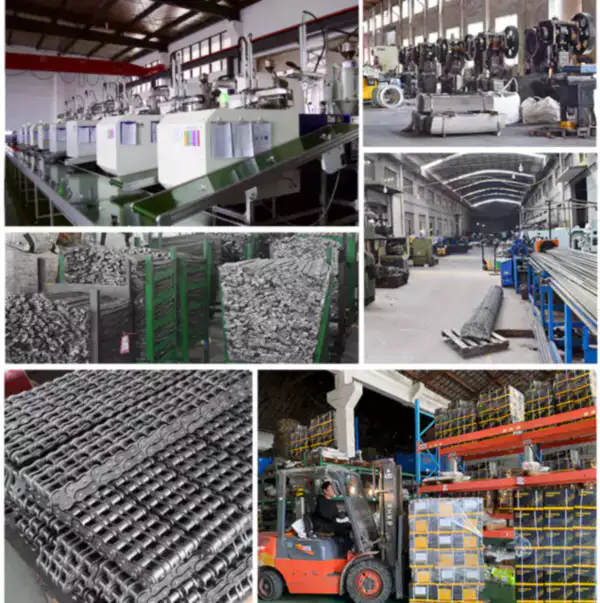Introduction
When it comes to selecting the right pitch size for your gripper chain, there are several factors to consider. In this article, we will explore the key considerations and provide a comprehensive guide to help you make an informed decision.
Understanding Pitch Size
Before we delve into identifying the right pitch size, let's first understand what pitch size refers to. In the context of gripper chains, pitch size represents the distance between the centers of two consecutive chain links. It is an essential parameter that determines the compatibility and performance of the chain.
Factors to Consider
1. Load Capacity
2. Speed Requirements
3. Application Specifics
4. Environmental Conditions
5. Chain Material
Calculating the Right Pitch Size
Now that we have a basic understanding of pitch size and the factors to consider, let's dive into the calculation process. The following steps will guide you through identifying the correct pitch size for your gripper chain:
Step 1: Determine the Required Load Capacity
First, assess the load capacity requirements of your application. This will help you determine the minimum pitch size needed to support the load without compromising the chain's integrity. Consider factors such as weight, force, and dynamic loading.
Step 2: Evaluate the Speed Requirements
The speed at which your gripper chain operates is another crucial factor to consider. Higher speeds may require smaller pitch sizes to maintain smooth and efficient operation. Take into account factors such as cycle time, acceleration, and deceleration.
Step 3: Consider the Application Specifics
Each application has its own unique requirements. Factors such as space limitations, conveyor design, and gripper mechanism should be considered when determining the pitch size. Ensure that the selected pitch size aligns with the specific demands of your application.
Step 4: Evaluate Environmental Conditions
The operating environment can have a significant impact on the performance and durability of the gripper chain. Factors such as temperature, humidity, and exposure to chemicals or abrasive materials should be taken into account. Select a pitch size that can withstand the environmental challenges faced by your application.
Step 5: Choose the Right Chain Material
The material of the gripper chain is crucial for its longevity and performance. Consider factors such as corrosion resistance, strength, and wear resistance. Different materials have different pitch size options available, so choose a material that suits your application requirements.
Example Applications
1. Packaging Industry
2. Automotive Assembly
3. Food Processing
4. Pharmaceutical Manufacturing
5. Robotics and Automation
Sprockets for Gripper Chains
Sprockets are an essential component that complements gripper chains, ensuring smooth and efficient operation. The right combination of gripper chains and sprockets is vital for maintaining the overall performance of the system. At Our Company, we offer a wide range of sprockets specifically designed to match our gripper chains.

Our sprockets are meticulously engineered to provide optimal engagement with our gripper chains, resulting in minimal wear and extended service life. With various tooth profiles and sizes available, we can meet the specific requirements of your application.
Our Advantages
1. Superior Quality: Our gripper chains are manufactured using high-quality materials and undergo rigorous quality control to ensure exceptional performance and durability.
2. Customization Options: We offer a wide range of customization options, including pitch size, chain length, and special coatings, to meet the unique needs of your application.
3. Competitive Pricing: Despite our commitment to delivering top-notch quality, we strive to keep our prices competitive, providing excellent value for your investment.
4. Quick Lead Times: We understand the importance of timely delivery. Our efficient production processes enable us to provide quick lead times without compromising quality.
5. Responsive Customer Support: Our dedicated customer support team is always ready to assist you with any inquiries or concerns you may have, ensuring a smooth and hassle-free experience.

Q&A
Q: Can I use a gripper chain with a larger pitch size than recommended?
A: While it may be possible to use a larger pitch size, it is not recommended as it can lead to decreased performance and increased wear due to improper engagement.
Q: What lubrication is recommended for gripper chains?
A: It is essential to use a lubricant specifically formulated for gripper chains to ensure smooth operation and prevent premature wear. Consult the chain manufacturer's recommendations for the best lubrication option.
Q: How often should I inspect and replace my gripper chain?
A: Regular inspection is crucial to identify signs of wear or damage. The frequency of replacement depends on various factors such as usage, operating conditions, and maintenance. It is recommended to follow the manufacturer's guidelines and perform routine inspections to ensure optimal performance.
| Gripper Chain Size | Suggested Pitch Size (mm) | Maximum Load Capacity (kg) | Price (USD) |
|---|---|---|---|
| GC-100 | 12 | 100 | 15 |
| GC-200 | 16 | 200 | 20 |
| GC-300 | 20 | 300 | 25 |
Edited by Zqq.
